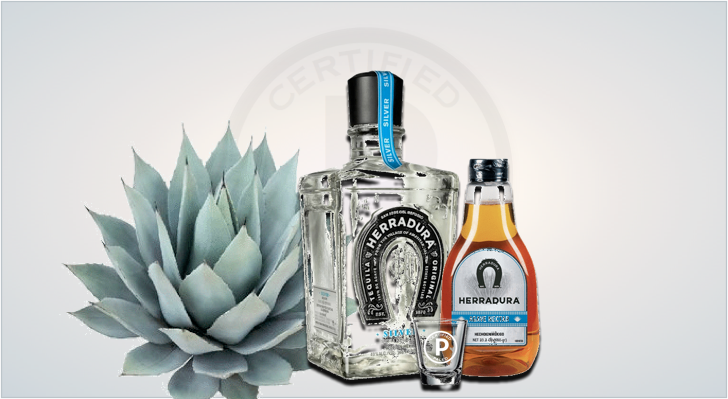Is Agave Nectar Paleo?

 First, Agave is is a desert succulent, it is not a grain or a bean, and Agave Nectar comes from the Agave plant. Agave as a plant definitely fits the Paleo bill. There is a lot of question within the Paleo Community whether or not Agave Nectar is something that we would consider to be a ‘Paleo’ sweetener. Many consider agave nectar to be a good alternative sweetener due to it’s low glycemic index, and it’s high inulin content (fructooligosaccharides). Here we will discuss the Agave Plant, Agave Nectar, Aguamiel, Miel de Agave, and Tequila in terms of their “Paleo” status, and whether they fit the Certified Paleo or Paleo Friendly Programs as offered by the nonprofit Paleo Foundation.
First, Agave is is a desert succulent, it is not a grain or a bean, and Agave Nectar comes from the Agave plant. Agave as a plant definitely fits the Paleo bill. There is a lot of question within the Paleo Community whether or not Agave Nectar is something that we would consider to be a ‘Paleo’ sweetener. Many consider agave nectar to be a good alternative sweetener due to it’s low glycemic index, and it’s high inulin content (fructooligosaccharides). Here we will discuss the Agave Plant, Agave Nectar, Aguamiel, Miel de Agave, and Tequila in terms of their “Paleo” status, and whether they fit the Certified Paleo or Paleo Friendly Programs as offered by the nonprofit Paleo Foundation.
AguaMiel
The sap from the the Agave or Maguey is known traditionally to the native people as aguamiel, or roughly translated: honey water. To make concentrated aguamiel so that it has a syrupy consistency, aguamiel is boiled down to reduce the water content. Think of it as the Maple Syrup of the Agave plant.
Is AguaMiel Paleo: Yes.
What is Agave Nectar?
 Agave Nectar (or syrup) is used in food and drinks as a sweetener, was developed in the early 1990s, and requires a moderate amount of processing to make.
Agave Nectar (or syrup) is used in food and drinks as a sweetener, was developed in the early 1990s, and requires a moderate amount of processing to make.
First, the juice of the agave plant is extracted. The juice is then forced through a centrifuge, into a holding tank, back into the centrifuge to remove visual impurities. Then the juice is sent through a heated centrifuge to concentrate the sugars and during this process, the agave juice takes on a caramel color. An enzymatic process is used to convert the original sugars into fructose and dextrose, and it is sent through another centrifuge with a filter to prevent crystalization of the sugars. Then it is sent through an evaporator chamber to reduce water content and concentrating the sugar content to a 50-90% fructose syrup.
Then, it is packaged and sold throughout the world, marketed as a natural, and healthful, sweetener.
The Paleo Conflict over Agave Nectar:
Though Agave Nectar is lower on the glycemic index, the high fructose content has been a cause for concern for some Paleo adherents. Even High Fructose Corn Syrup (HFCS) contains only 55-90% fructose. We worry about it’s potential lead to insulin resistance.
For individuals with fructose malabsorption (formerly named dietary fructose intolerance) issues, agave nectar should be avoided. Fructose malabsorption is a digestive disorder characterized by a malabsorption of fructose, in which absorption of is impaired by deficient fructose carriers in the small intestine’s enterocytes.
There are mixed reviews about the Paleo-Friendliness of Agave Nectar. Some Paleo proponents have given it the thumbs up, while others have given it a thumbs-down. Because so much controversy surrounds this particular sweetener, our ruling is as such:
Can Agave Nectar be Certified Paleo?: No.
Can Agave Nectar be Paleo Friendly: Yes.
Considering that the vast majority of the the gripe about Agave Nectar involves the fructose content, it would be nearly impossible to certify dried mangos and honey, which have about the 50-50% carb content of fructose, and dried mangos and honey are perfectly natural, healthful foods.
However, the processing involved in the production of Agave Nectar may be a legitimate concern. Heating does alter the sugar content, and enzymes can denature proteins to give a product its consistency. However, not all enzymes are inherently bad (bees use enzymes to make nectar into honey), so the jury is still out at large within the Paleo community. It is for this reason that it may be accepted into the Paleo Friendly standards, but not Certified Paleo standards.
Bonus: Tequila
 Well, we are talking about Agave so it’s only natural that we also make mention of Tequila. Before Agave Nectar, the prime use of the Agave plant was to make tequila. Making Tequila involves a fermentation process, and it is considerably less processed than Agave Nectar.
Well, we are talking about Agave so it’s only natural that we also make mention of Tequila. Before Agave Nectar, the prime use of the Agave plant was to make tequila. Making Tequila involves a fermentation process, and it is considerably less processed than Agave Nectar.
Jimadores are tasked with planting, tending, and harvesting the agave plants. Modern farm machinery has left this trade remarkably unaltered, and the tequila-making process relies on knowledge passed down through generations. After harvesting the agave, they are transported to ovens and baked. After baking, they are mashed, and the resulting juice is poured into either wooden barrels or stainless steel vats to ferment.
It is then bottled and sold throughout the world as an earthy, alcoholic beverage that differs in taste from highlands to lowlands, and from farm to farm.
Is Tequila Paleo?
Can Tequila be Certified Paleo? Yes.

